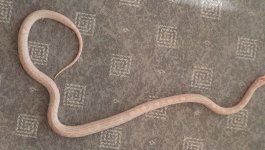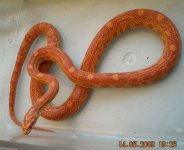This doesn't apply to corns, but Brian E. Viets, Ph.D. did a study on leopard geckos titled The Effects of Incubation Temperature on Hatchling Sex and Pigmentation. The article can be read in the 1998 edition of The Leopard Gecko Manual, page 73.
The basics of it, and how I'm linking it here, is that in the case of leopard geckos the higher the incubation temp the lower the amount of melanin pigment present. The inverse is also true, the lower the incubation temp, the more melanin pigment present. Environmental influences (lack of food intake [i.e., stress], caging temps, breeding, etc), as well as genetics also dictate melanin deposition.
I'd like to draw the conclusion that similar influences could trigger other possible anomalies in various snake species. If anything we know as a community that high temps can potentially cause deformities (spine kinking).
Again, going back to leopard gecko, to partly prove that color/pattern isn't set at conception...
Ron Tremper is known for the "Tremper incubation method" where he locks in the sex of geckos at the first 2 weeks of incubation, then elevates temps. This is one means used to avoid the browning out of his line of albino leopard gecko. The higher, male incubation temps aid in avoiding melanin formation in a Tyrosine-positive albino (interestingly all 3 leopard gecko strains are unrelated, incompatible with one another, and are all T+ albinos). This method also helps in other morphs. But basically, incubation stresses (good or bad) are well known to influence various things in reptiles.




